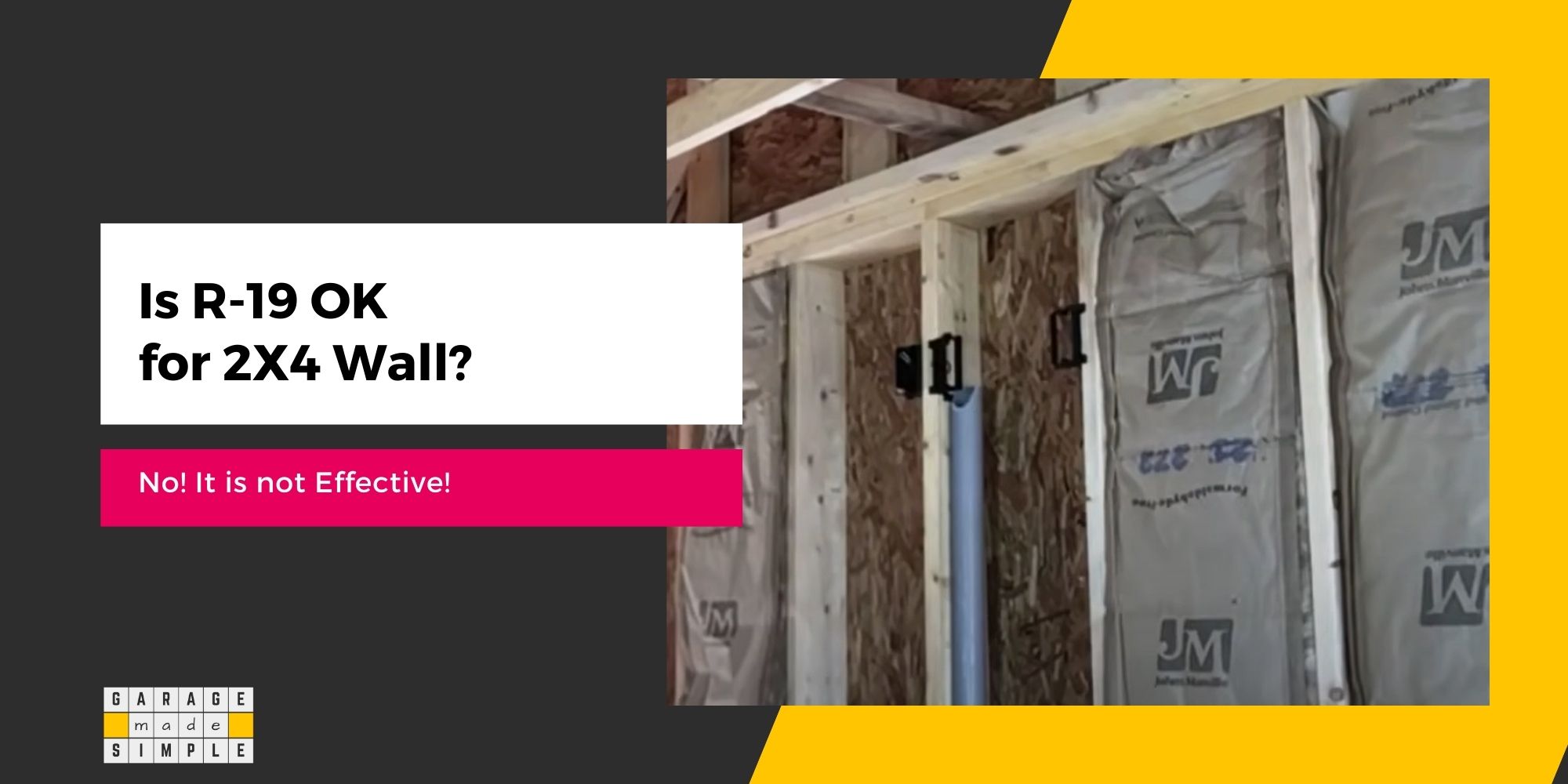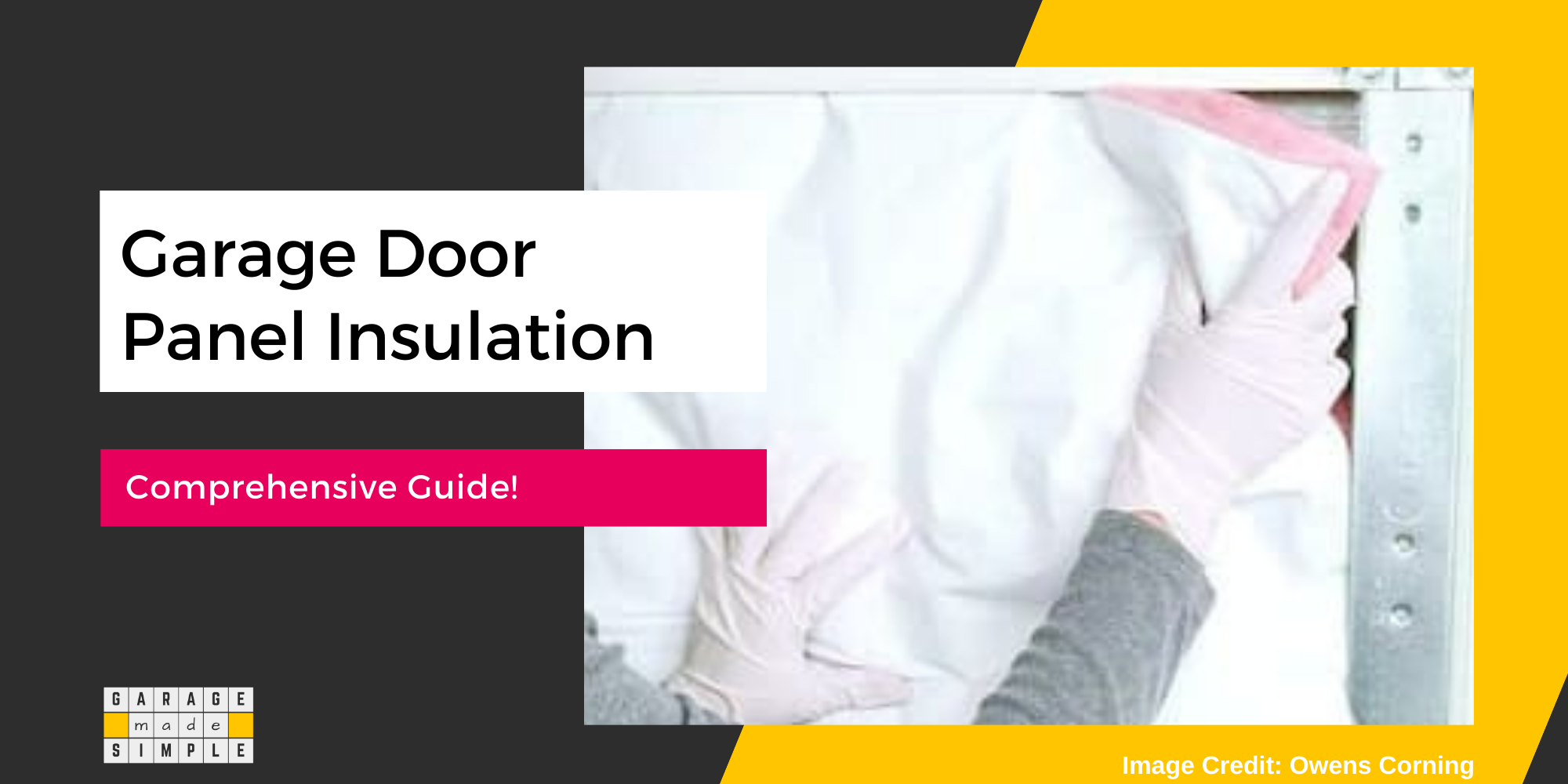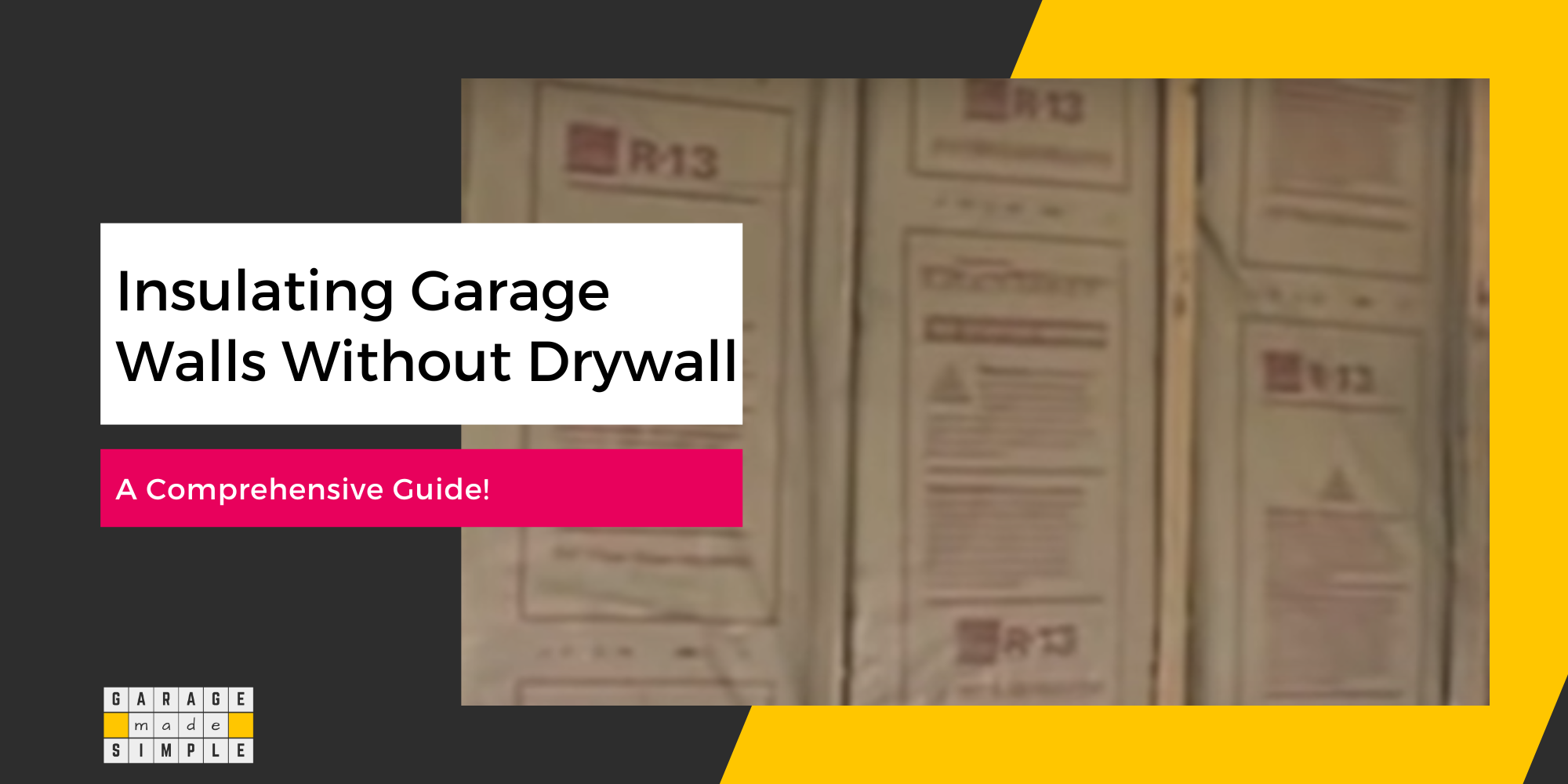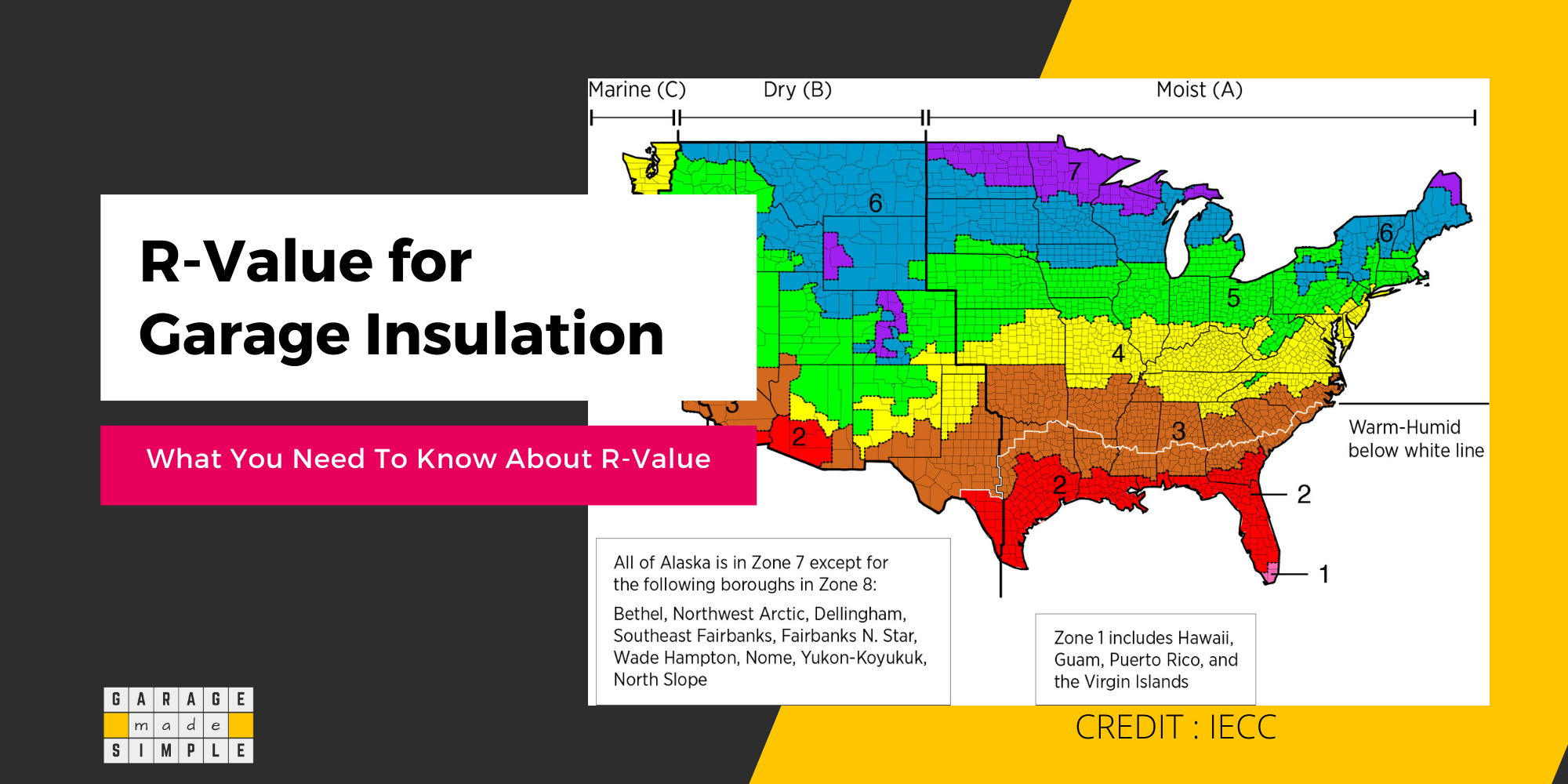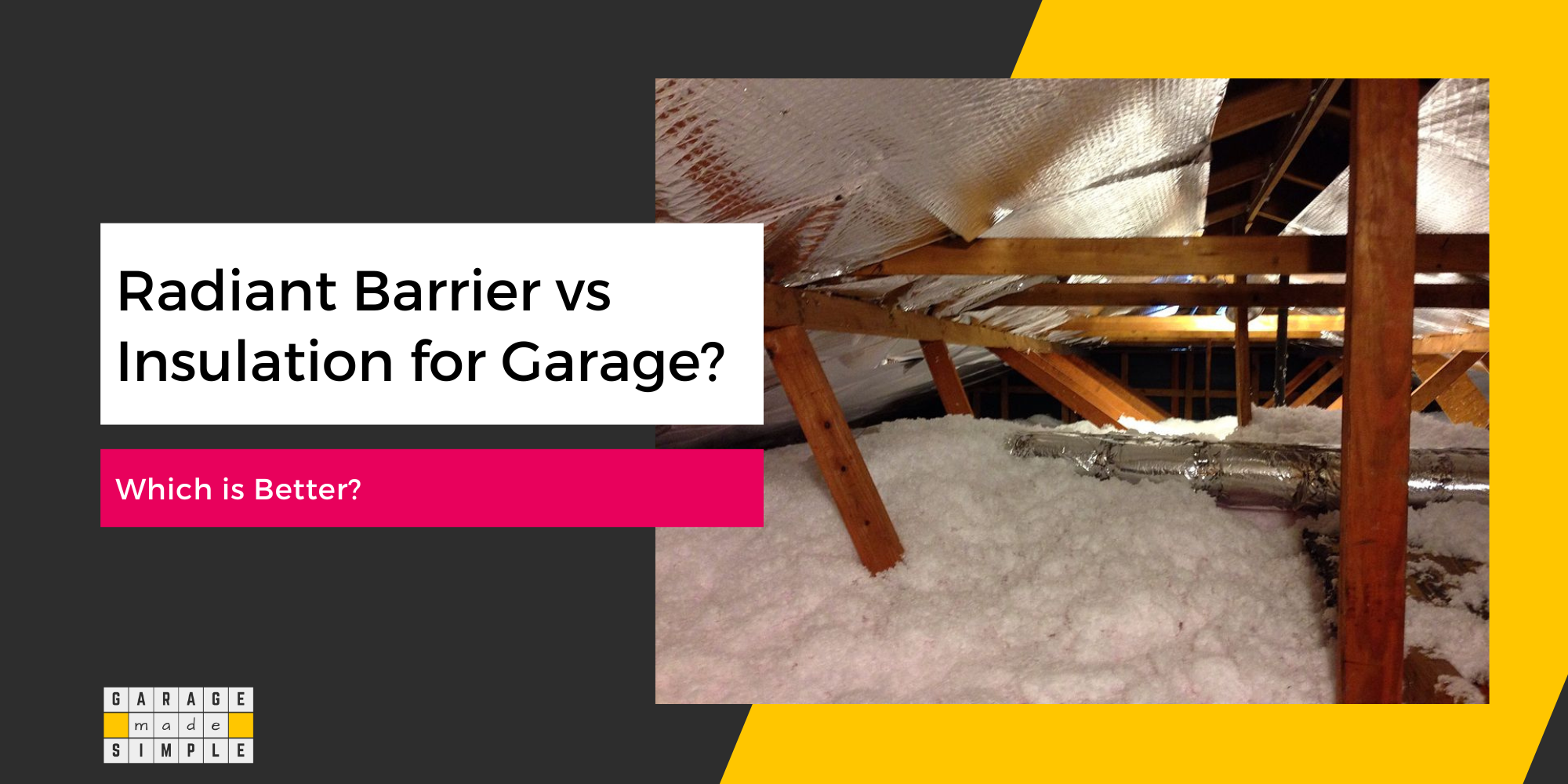Effective Garage Insulation: An Epic Guide [2024]
As an Amazon Associate, I earn from qualifying purchases.
What is Garage Insulation? Why is it Important?
Do you want to get more out of your garage than just parking cars and storing stuff (often junk) there? Then garage insulation is your magic key.

Insulation helps keep your garage at a comfortable temperature, all year round, without adding to your energy costs.
With adequate garage insulation, you can make it a multi-utility space. Whether your dream is to have a workshop, a gym, a man cave, or a home office within this space, garage insulation can make your dreams come true.
Garage insulation is not much different from home insulation. It involves adding insulating materials like fiberglass, foam, or cellulose to walls, ceilings, and doors to regulate temperature and reduce noise.
A home can have an attached garage or a detached garage. Insulation is critical, in the case of an attached garage, as it affects the temperature within your home too! But there are many good reasons to insulate a detached garage as well!
Benefits of Garage Insulation
Improved Comfort
Garage insulation maintains a stable temperature, making the space more comfortable and livable all year round. During winter, it reduces drafts and cold spots. In the summer, it keeps the garage at a pleasant temperature.
A comfortable garage becomes an inviting space, whether you’re working, working out, or just chilling there. Proper garage insulation also minimizes noise, creating a quieter, more enjoyable space.
Energy Savings
Heat will always flow from a high-temperature zone to a low-temperature zone. So, an uninsulated garage loses heat in winter and gains heat in summer. You will need to use energy to heat the garage in winter and cool it in summer.
Garage insulation significantly reduces energy consumption by slowing down the rate of heat transfer considerably. It reduces heat loss from the garage when it is colder outside. On the other hand, it reduces heat gain when it is hotter outside.
As a result, you need to use the garage heater less in the winter and the garage air conditioner or fan, less in the summer. in essence, garage insulation leads to lower energy bills and a more eco-friendly garage and home.
Provides Protection
Protects & Increases the Life of Cars
Insulating your garage helps maintain a stable temperature, protecting your car from extreme heat or cold. This reduces wear and tear on the engine, battery, and tires.
For example, in winter, garage insulation prevents the engine oil from thickening, ensuring smoother starts and better car performance.
Protects Garage Structure
Proper insulation prevents moisture buildup, which can lead to mold, mildew, and structural damage. By keeping the garage dry, you extend the life of the walls, ceiling, and foundation.
For instance, garage insulation and adequate ventilation can prevent wood rot in wooden structures, preserving the integrity of your garage.
Protects Items Stored in the Garage
Insulation safeguards stored items from temperature fluctuations and humidity. This is crucial for items like tools, electronics, and sporting goods.
Garage insulation helps keep humidity levels in check. High humidity is the main cause of rust on metal tools, failure of electronic parts, and delamination of adhesives in sporting goods.
Reduction in Fire Risk
Garage insulation reduces fire risk, as many insulating materials are also fire-resistant. Some examples are mineral wool, fiberglass, and extruded polystyrene (XPS) foam boards.
These materials slow the spread of flames and provide a barrier against heat. Proper insulation also helps prevent electrical fires by maintaining stable temperatures, reducing the risk of overheating wires and equipment.
Reduced Condensation
Garage insulation helps maintain a consistent temperature, reducing condensation on walls and floors. This prevents moisture buildup, which can lead to mold, mildew, and rust.
For example, insulated garages keep tools and equipment dry, extending their lifespan and maintaining their functionality.
Condensation on the garage floor can seep in through cracks in the concrete and cause deterioration of the concrete slab.
When it is freezing outside, garage insulation can prevent ice formation on the floor, reducing slip risks and potential injuries.
Noise Reduction
Most insulation materials, not only reduce heat transmission, but they also reduce noise transmission. They absorb sound waves, minimizing external noise and containing internal sounds.
This is a bonus benefit, as garage insulation also makes it a quieter space. This is especially helpful if you use your garage as a workshop. Your family and your neighbors will not complain when you operate your electric drill or saw!
Increased Home Value
Garage insulation enhances your home’s energy efficiency and comfort, making it more attractive to potential buyers.
A well-insulated garage can be marketed as a versatile parking, storage, and living space. The result will be an increase in the home value.
Types of Garage Insulation Materials
5 types of garage insulation materials can be used for different applications. Each has its own features, advantages, disadvantages, and best use cases.
Fiberglass Batts or Rolls
Fiberglass batts or rolls are among the most popular insulation materials for garages. They are made from fine glass fibers and come in pre-cut panels or continuous rolls, making them easy to install between wall studs, ceiling joists, and floor joists.
Advantages:
- Cost-Effective: One of the most affordable insulation options.
- Ease of Installation: DIY enthusiasts with basic skills and tools can install it easily.
- Fire-Resistant: Naturally non-combustible, adding a layer of fire protection.
Disadvantages:
- Moisture Sensitivity: Can lose effectiveness if exposed to moisture, leading to mold growth.
- Skin Irritation: Requires protective clothing, gloves, and eyeglasses during installation to avoid skin irritation from glass fibers.
Best Use Cases:
- It is ideal for a garage with stud framing for walls, ceiling, and floors, with standard stud spacing. Fiberglass garage door panel insulation kits are also available.
- Suitable for garages where moisture control is managed.
Fiberglass batts or rolls are a good balance of affordability and performance. No wonder, they are a favorite choice for garage wall insulation projects.
Recommended Product for Garage Wall Insulation
Owens Corning R-15 Faced 23 by 93 Fiberglass Batt Insulation
- Owens Corning Insulation. With a R-Value of R-15 the insulation will fit into any 2×4 construction board.
- Kraft Faced. This insulation has a moisture barrier that is used for exterior walls, floors, or attics.
- This insulation is perfect for 8-foot walls. Two bundles of 4 for a total of 8 bags for at total of 831.84 square footage.
Recommended Product for Garage Ceiling or Floor Insulation
Owens Corning R 19 Unfaced 15 by 93 Fiberglass Batt Fits 2X6 Floor-Ceiling
- Perfect for insulating floors and ceilings
- Friction fit; stays in place upon installation
- 8 batts per bag, covering 77.5 sq ft per bag
- No paper backing; ideal for interior walls and floors
- Not for exterior walls; suitable for soundproofing
- R-19 value; dimensions: 15″ x 93″ x 6.25″
Recommended Product for Garage Overhead Doors
Owens Corning Garage Door Insulation Kit
- 5 times better thermal performance, compared to an uninsulated door
- As much as 20% reduction in perceived noise level
- Installs in less than 1 hour (up to 9′ door) – Only tools needed for installation are tape measure, utility knife, straight-edge and marker
- Flexible material resists denting
- Cleanable vinyl surface (w/mild detergent)
Rigid Foam Panels
Rigid foam panels are a versatile and efficient insulation option for garages. Made from polystyrene, polyisocyanurate, or polyurethane, these panels offer high R-values and excellent thermal resistance.
Advantages:
- High Insulation Value: Provides superior thermal resistance even at lower thicknesses, reducing heat transfer.
- Moisture Resistance: Effective in damp environments, preventing mold and mildew.
- Structural Support: Adds rigidity to walls and ceilings, enhancing structural integrity.
Disadvantages:
- Cost: Generally more expensive than other insulation types.
- Installation: Requires precise cutting and fitting, which can be labor-intensive.
Best Use Cases:
- It is ideal for insulating garage door panels but rarely used for walls and ceilings.
- Suitable for areas where space is limited, as they provide high insulation in a thin profile.
Rigid foam panels are an excellent choice for garage door panel insulation. You get high-performance insulation with sleek looks, added moisture protection, and structural rigidity.
Recommended Product for Garage Door Panel Insulation
Matador 1-Car Garage Door Insulation
- Installation in 3 easy steps
- Installation does not require tapes, glues, or pins
- Fits most standard pan-style 8-foot and 9-foot garage doors
- Panels scored for easy installation; No special tools are required
- Includes 8 high-impact polystyrene laminate panels 20. 25″ H x 54″ W x 1. 25″ thick
Cellulose Insulation
Cellulose insulation is a sustainable, eco-friendly option made from recycled paper products and treated with fire retardants. It is blown into walls, ceilings, and floors, providing excellent coverage and thermal performance.
Advantages:
- Environmentally Friendly: Made from recycled materials, reducing environmental impact.
- Fire-Resistant: Treated with fire retardants, enhancing safety.
- Effective Coverage: Fills gaps and voids, ensuring comprehensive insulation.
Disadvantages:
- Moisture Sensitivity: Can absorb moisture, potentially leading to mold growth.
- Installation: Requires professional installation with specialized equipment.
Best Use Cases:
- It is suitable for retrofitting existing structures where other insulation types are difficult to install.
- Suitable for walls, attics, and floors, providing effective thermal and acoustic insulation.
Cellulose insulation is a sustainable and efficient solution for a garage that is finished (already drywalled) but was not insulated earlier.
Recommended Cellulose Insulation Product
GreenFiber’s Sanctuary Blow-In Insulation is known for its high thermal performance and eco-friendly composition. Made from 85% recycled paper, it provides excellent coverage and is treated with fire retardants for added safety.
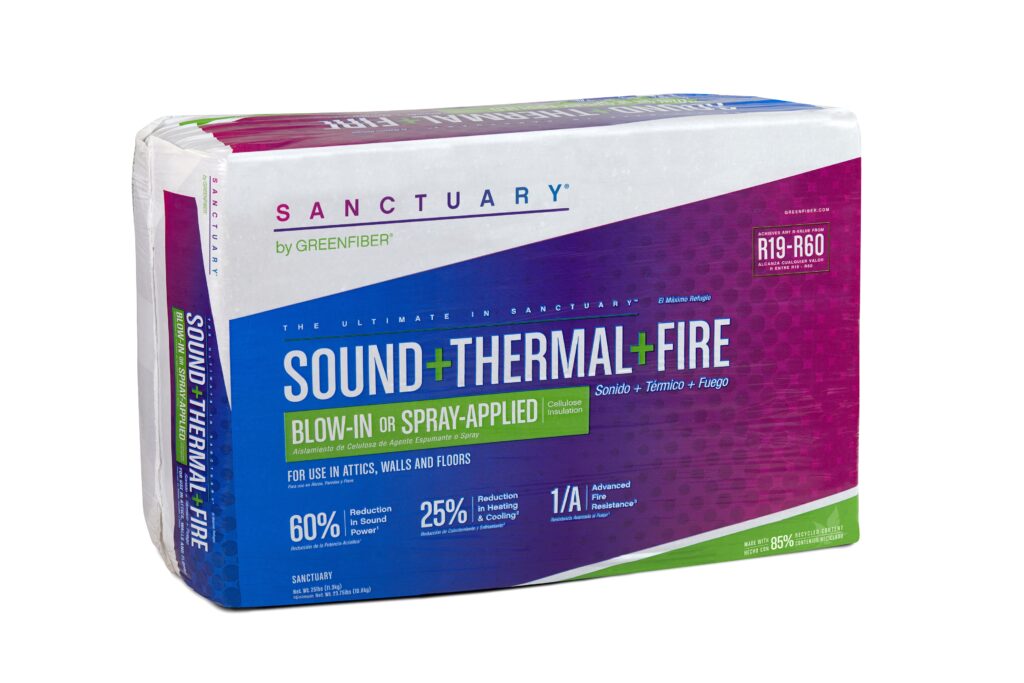
Sanctuary® Blow-In or
Spray-Applied Insulation
Used as attic insulation and installed in walls, floors, and ceilings. Sanctuary will significantly improve the comfort, safety, and well-being provided by any home.
The first all-in-one fiber insulation that can be blown in or spray-applied. It’s suitable for all climates and conditions.
Capable of reducing sound power by 60% and heating and cooling costs by 25%, it’s easily installed, environmentally responsible, and packaged to optimize coverage and ease of installation.
Spray Foam
Spray foam insulation is a high-performance option that expands upon application, filling gaps and cracks to create an airtight seal. It comes in two types: open-cell and closed-cell.
Advantages:
- Superior Insulation: Provides high R-values, enhancing energy efficiency.
- Air Sealing: Expands to fill gaps, preventing air leaks and drafts.
- Moisture Barrier: Closed-cell foam acts as a vapor barrier, reducing moisture issues.
Disadvantages:
- Cost: More expensive than other insulation types.
- Professional Installation: Requires specialized equipment and expertise.
Best Use Cases:
- It is ideal for hard-to-reach areas, such as corners and crevices.
- Suitable for walls, ceilings, and floors where maximum insulation and air sealing are needed.
- Finished garage that was not insulated earlier or where existing insulation needs to be upgraded with minimal disruption.
Spray foam insulation offers unparalleled performance in energy efficiency and moisture control. However, the very high material and professional installation cost make it an overkill for garage insulation.
Reflective Insulation
Reflective insulation, (aka radiant barrier insulation), works by reflecting heat, rather than reducing heat transmission. It is a highly reflective foil layer, often combined with other insulation materials like foam or bubble wrap.
Advantages:
- Heat Reflection: Effectively reflects radiant heat, keeping the garage cooler in hot climates.
- Lightweight: Easy to handle and install, even for DIY projects.
- Moisture Barrier: Helps prevent condensation and moisture buildup.
Disadvantages:
- Limited Insulation Value: Primarily effective for radiant heat, less so for conductive or convective heat.
- Installation: Proper spacing and installation are necessary to maximize effectiveness.
Best Use Cases:
- It is great for garages in hot climates where radiant heat is a significant concern.
- Suitable for garage doors, walls, and roofs to enhance overall thermal performance.
Reflective insulation is a practical choice for reducing heat gain and improving energy efficiency in warmer regions.
Recommended Product for Garage Walls in Hot Regions
Reflectix ST16025 Staple Tab Insulation Roll, 16 in. x 25 ft
- The staple tab edge is manufactured by perforating the bubbles 3/4″ Down each edge of the product
- This creates a foldable tab that provides easier stapling for installation in wall, ceiling, and floor systems
- Inhibits or eliminates condensation
- Reflective insulation for use in a crawl space, attic, wall, metal buildings, and post and frame structures
- Fiber-free, environmentally safe, easy to install, and lightweight
- The metallic foil surface repels heat
- Air bubble lining resists the transfer of heat
Recommended Product for Garage Door Panels in Hot Regions
US ENERGY PRODUCTS NASATEK Reflective 1 Car Garage Door Insulation
- All-In-One Kit Contains everything you need to insulate your Garage Door
- Improves Thermal Performance
- Easily Installs in 60 Minutes or Less
- Increased R-Value and E-Value
- 4 Rolls of 9ft x 24 inch
- Double-Sided GDK Tape
Installing Garage Insulation
Fiberglass batts or rolls, rigid foam boards, and reflective insulation are quite easy to install. For installation tips and precautions, just watch the video clips below.
Owens Corning, a reputed manufacturer of insulation materials, has published them on their website and they are very helpful.
Fiberglass Batts
XPS Rigid Foam Board
Beyond Garage Insulation
Garage insulation will help, a lot, in transforming it into a comfortable and inviting space. But it is not enough, by itself. Take care of a few more aspects related to garage insulation to make the space, almost as good as your home interiors.
Install a Vapor Barrier
A vapor barrier (aka a vapor retarder), is a material that prevents moisture from passing through walls, ceilings, and floors, from areas of high humidity to areas of low humidity. High humidity in a garage can lead to mold growth, structural damage, and reduced thermal efficiency.
Benefits of Vapor Barriers
- Moisture Control: Prevents moisture from entering the insulation layer.
- Mold Prevention: Reduces the risk of mold and mildew growth.
- Structural Protection: Protects the building structure from moisture-related damage.
- Enhanced Insulation Performance: Maintains the thermal efficiency of the insulation
Ensure Adequate Garage Ventilation
Ensuring adequate garage ventilation is essential for maintaining a healthy, comfortable, and energy-efficient environment.
It complements insulation by preventing moisture buildup, enhancing air quality, regulating temperature, reducing energy costs, and protecting stored items.
There are many garage ventilation options available. Typically, it is best to combine 2 or 3 options. Figure out which works best for your garage and climate.
Air Sealing and Weatherstripping
Heat is transmitted by conduction, convection, and radiation. Insulation minimizes conduction losses, while a radiant barrier reduces radiation losses. So what about heat loss through convection?
This is where air sealing and weatherstripping are required for overall effective garage insulation.
Seal gaps and cracks with caulk or foam, and install weatherstripping around doors and windows. This prevents drafts & moisture ingress, reduces energy loss, and even minimizes noise pollution.
Thank you very much for reading the post. I do hope you found it informative and useful.







